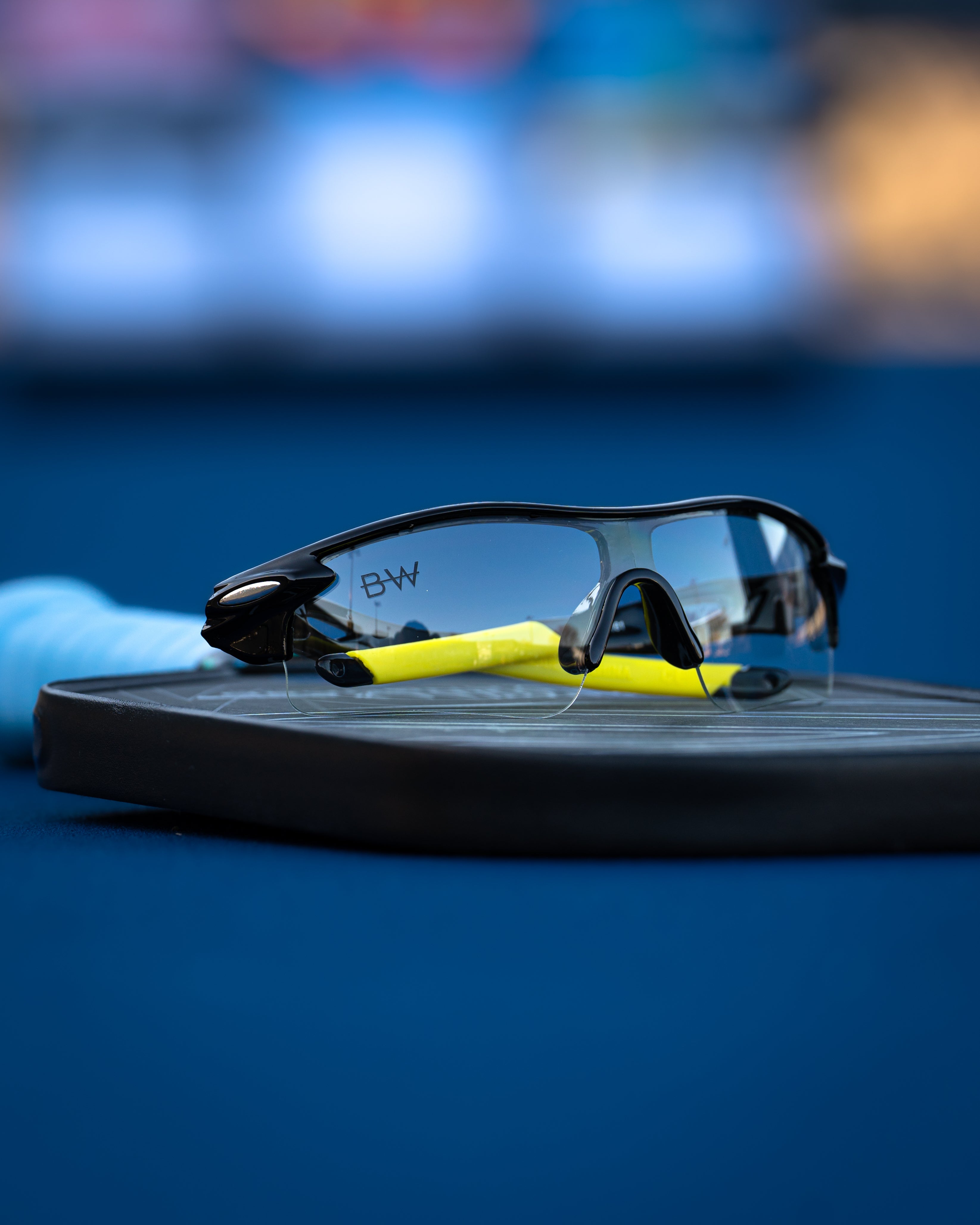Understanding Light Transmission in RX Sports Eyewear
Share
For any pickleball player wearing prescription sports glasses, one of the most overlooked but game-changing factors is light transmission.
It determines how well you see in glare, shade, direct sun, overcast skies—or all of them in one match.
In this guide, we’ll explain:
- ⚙️ What Visible Light Transmission (VLT) means
- ☀️ How different tints and lenses perform in real match conditions
- 🧪 Which Blinded RX glasses are optimized for different lighting
- 💡 Why non-polarized lenses matter for reaction time and performance
🔍 What Is Visible Light Transmission (VLT)?
Visible Light Transmission (VLT) refers to the percentage of light that passes through your lenses and reaches your eyes. It’s measured on a scale from 0% to 100%:
- Low VLT (10–20%): Best for bright sunlight (darker tints)
- Medium VLT (20–40%): Best for mixed or partly cloudy light
- High VLT (40–80%): Great for shade, indoor play, or early mornings
Too little light = poor vision. Too much = glare, eye strain, and late reactions.
🎾 Why Light Transmission Matters in Pickleball
Pickleball matches often happen under inconsistent light: morning haze, overhead sun, clouds shifting mid-game, or bright reflections off light-colored courts.
The wrong lens transmission can lead to:
- Misjudging depth or ball speed
- Late paddle placement or resets
- Visual fatigue or squinting by Game 3
That’s why we test every Blinded RX lens under live court conditions—not just lab specs.
👓 VLT Comparison of Blinded Wear RX Lens Options
| Lens Type | Estimated VLT Range | Best Use Case |
|---|---|---|
| Clear RX | 85–90% | Indoor play, shaded courts, night drills |
| Gray Tint RX | 15–18% | Bright sun, outdoor tournaments |
| Transitional RX | 15% (sun) to 80% (shade) | Variable light—clouds, sun, indoor/outdoor play |
💡 Why We Avoid Polarized Lenses
Blinded Wear doesn’t use polarized lenses—and for good reason.
In fast-paced sports like pickleball, polarization can flatten depth perception. It blocks important vertical light waves that help players gauge court depth, net height, and trajectory.
Our non-polarized lenses preserve:
- True 3D tracking of the ball
- Better read on opponent movement
- Faster reaction time in the kitchen and corners
🔗 Read: Polarized vs. Non-Polarized Lenses for Sports
🌤️ Frame Picks by Lighting Condition
☀️ Bright Outdoor Play
⛅ Mixed Light or Variable Conditions
🌙 Indoor or Shaded Play
🔗 Related Blogs to Deepen Your Vision Edge
- How This RX Frame Adjusts to Sudden Sun Glare
- These RX Glasses Handle Morning Mist and Afternoon Glare
- Transition Lenses in Tournament Play: Hidden Advantages
💬 Customer Feedback: Light Makes a Difference
“I used to squint during mid-day games. Gray Hound RX lenses cut just enough light—no more second-guessing lobs.”
– Sam M., AZ
“I play in Oregon. Shade one minute, sun the next. Havana Melt RX adapts better than anything I’ve used.”
– Elena B., OR
“Clear RX Frost lenses changed indoor play for me. So much cleaner under LED lights.”
– Drew F., IN
❓ FAQ: Light Transmission in RX Eyewear
Is there one lens that works for every light condition?
Transitional RX lenses are the closest to all-around performance—but if you play mostly indoors or outdoors, use a purpose-built lens for maximum clarity.
Will tinted lenses distort color?
No. Our tints preserve natural contrast while filtering light. No yellow or green cast like cheap lenses.
Can I get gray or transitional lenses at no extra cost?
Yes. Your RX purchase includes 1.61 high-index lenses in clear, gray, or photochromic options at no additional cost.
Are the coatings included?
Yes—anti-scratch and anti-fog coatings come standard. So does our Protection Plan.
🎯 Ready to Optimize Your Light Conditions?
Let your vision adjust with your environment—not against it. Court clarity starts with proper light control.
Explore your match-made RX frame today »
